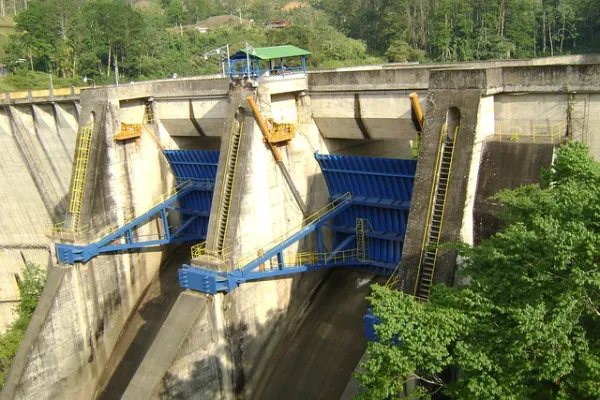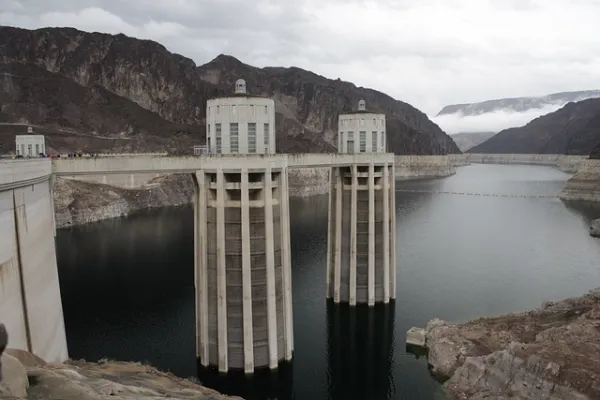Watt’s Flowing? A River of Fun Facts About Hydro Energy

Hydropower, also referred to as hydro energy is a type of energy that harnesses the force of moving or falling water to produce electricity. It has been utilized for centuries. Is widely regarded as a source of clean and sustainable power. Besides its impact, on the environment hydro energy boasts an array of facts that make it even more captivating. From its origins to statistics and unique features hydropower possesses a rich history and many intriguing details that emphasize its significance and potential. In this article we will delve into some of these enthralling facts about hydropower shedding light on its characteristics and explaining why it continues to be a favored option, for energizing our world. Here are some fun facts about hydro energy:
Dive into the World of Hydro Energy: 5 Fun Facts You Didn’t Know!
Hydroelectric power, also referred to as hydro energy is an energy source that utilizes the force of flowing water to produce electricity. This friendly and plentiful energy option has been, in use for years and still plays a crucial role, in meeting our increasing energy demands. In this article we will explore the realm of hydro energy. Reveal five facts that you might not be aware of regarding this form of renewable power.
- Ancient Origins:
Yes it’s fascinating to learn that hydro energy has actually been utilized since times. Back, around 200 BC, the Greeks employed water wheels to grind wheat into flour. Similarly the ancient Romans harnessed the power of water wheels to operate mills and sawmills. These early instances of hydropower truly set the stage for the advancement of contemporary hydroelectric power plants. - Largest Source of Renewable Electricity:
Hydropower stands as the contributor to renewable electricity worldwide. As reported by the International Hydropower Association hydropower makes up, around 16% of the electricity production. This friendly and sustainable energy source plays a role, in curbing greenhouse gas emissions and combating climate change. - Dams and Reservoirs:
The construction of dams and reservoirs is an aspect of hydro energy generation. Dams are constructed to create a barrier, along rivers, forming reservoirs. When water is released from these reservoirs it passes through turbines that spin generators, producing electricity. These structures not generate power. Also offer advantages, like flood control, irrigation and recreational activities. - Pumped Storage Hydropower:
Pumped storage hydropower is a type of hydropower that functions, like a battery. When electricity demand is low it harnesses the electricity to pump water from a reservoir up to an upper reservoir. Then during periods of electricity demand the stored water is released from the reservoir and passes through turbines to produce electricity. This versatile and effective system plays a role, in maintaining grid stability and ensuring a supply of electricity. - Environmental Considerations:
Although hydropower is often regarded as an energy source it does come with environmental concerns. When building dams communities may be. Natural habitats can be lost. Moreover changes, in river flow patterns may affect the migration of fish and disrupt ecosystems. Nevertheless thanks to progress and the adoption of eco measures efforts have been made to address these issues and promote a more sustainable approach, to hydroelectric power generation.In summary hydro energy is an form of renewable energy that has a captivating past and countless advantages. From its roots, to its status, as the primary source of renewable electricity hydropower keeps progressing and aiding in meeting our energy requirements. By comprehending the intricacies involved in generating hydro energy and taking into account the impacts we can effectively tap into this resource while safeguarding our natural ecosystems.
The Power of Water: 4 Fun Hydro Energy Facts
Water has played a role, as an energy source for centuries and its power continues to be harnessed even today. Hydro energy, also referred to as power involves converting the energy from moving water into electricity. This renewable and environmentally friendly energy source holds promise in meeting our growing needs for power while decreasing our dependency on fuels. In this article we will delve into four fun facts, about hydro energy that showcase the strength and potential of water as an energy source.

- The Largest Renewable Energy Source: Hydropower stands as the leading energy source contributing to, around 16% of the global electricity generation. It outshines renewables like wind power in terms of its reliability and consistent performance. Hydroelectric power plants have the ability to generate electricity continuously by weather conditions making them a dependable energy source. As technology continues to advance hydro energy holds potential, in driving our transition towards a more environmentally friendly future.
- A Clean and Environmentally Friendly Option: Hydropower is widely recognized as one of the friendly sources of energy. Unlike fuels hydroelectric power plants do not release greenhouse gases into the atmosphere thus helping combat global warming. Moreover they have an impact, on air quality, which leads to pollution levels and improved public health. Another advantage of hydropower is that it generates no waste or, by products that need to be disposed of making it a sustainable and eco friendly option.
- Dams: The Backbone of Hydro Energy: Dams have a role, in producing hydro energy. They allow water to be stored in reservoirs, which can then be released to generate electricity. When water is let out from a dam it passes through turbines that spin the generators to produce power. The size and capacity of a dam determine the amount of electricity that can be generated. Massive hydroelectric power plants like the Three Gorges Dam, in China have the ability to produce quantities of electricity and ensure a source of power for millions of individuals.
- Small-Scale Hydro Energy: Small scale hydro energy systems are becoming increasingly popular, alongside the known large scale hydro energy projects. These smaller hydroelectric power plants can be established on rivers and streams in locations with the purpose of supplying electricity to nearby communities. Not only these systems have an impact on the environment but they can also be seamlessly integrated into existing infrastructure making them a feasible option for generating decentralized power. Moreover the implementation of small scale hydro energy systems has the potential to contribute to development and enhance electricity accessibility, in underserved regions.
In summary hydro energy has potential as an sustainable power source. Its dependability, harm, to the environment and capacity to produce electricity on both small scales make it an appealing choice, for fulfilling our energy requirements. By utilizing the power of water we can tap into an plentiful energy source that can aid us in moving towards a greener and more sustainable tomorrow.
Surprising Fun Facts About Hydro Energy: From Ancient Origins to Modern Applications
Did you know that the utilization of water to generate electricity, known as hydropower has a captivating history that dates back, to civilizations? It’s incredible how this form of energy has evolved over time. Let me share some facts, about hydro energy that showcase its journey. Here are some fun facts about hydro energy:

- Ancient Origins: Yes it’s fascinating to learn that hydropower has been utilized for centuries. The ancient Greeks were pioneers, in this field using water wheels to grind grain. Similarly the Romans harnessed the power of water to run their mills and created aqueducts to supply water to their cities.
- Largest Hydropower Producer: China holds the title of being the producer of hydropower. Thanks, to its river network and ample rainfall China has effectively utilized this resource to generate a substantial amount of electricity. The Three Gorges Dam, situated on the Yangtze River stands as the facility, in existence.
- Renewable and Clean: One of the benefits of hydropower is its eco friendly nature. Unlike fuels, which emit greenhouse gases hydropower generates no air pollution or toxic waste. It harnesses the water cycle making it a sustainable and environmentally conscious energy choice.
- Diverse Applications: Hydropower goes beyond generating electricity. It has uses, such, as aiding in irrigation, flood prevention and water supply. In fact many nations utilize hydropower to manage their water resources and ensure a provision of water, for farming, industry and household needs.
- Pumped Storage: Pumped storage is an aspect of hydro energy that enables the storing of surplus electricity, for use. When there is a demand, like during nighttime water is pumped uphill. Stored in a reservoir. When there is a need for electricity the stored water is released, flowing down and powering turbines to produce energy. This creative technology offers a solution, for managing the changing energy needs of the power grid.
- Environmental Impact: Although hydro energy is often praised as an eco friendly energy source it still has consequences. Building dams can result in the relocation of communities, destruction of habitats and disturbance, to aquatic ecosystems. Achieving a balance between the advantages and potential drawbacks of projects is essential, for promoting development.
- Growing Potential: Even though hydro energy is a technology that has been around, for a while there are still parts of the world where its full potential remains untapped. According to the International Energy Agency 20% of the possible hydropower capacity worldwide has been utilized so far. This indicates that there is room for growth and advancement, in harnessing this energy source.
To sum up the evolution of hydro energy, from its beginnings to its uses is truly remarkable. Its ability to be renewed its wide range of applications and its potential for continued expansion all contribute to its importance in the energy context. However it remains crucial to find an equilibrium between harnessing waters power and minimizing any effects, on the environment ensuring a sustainable future.